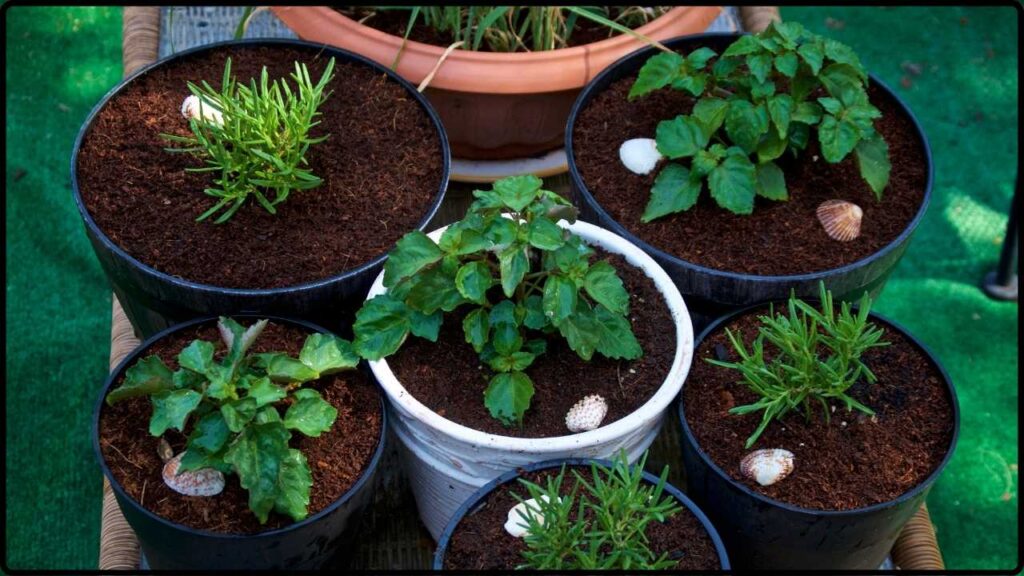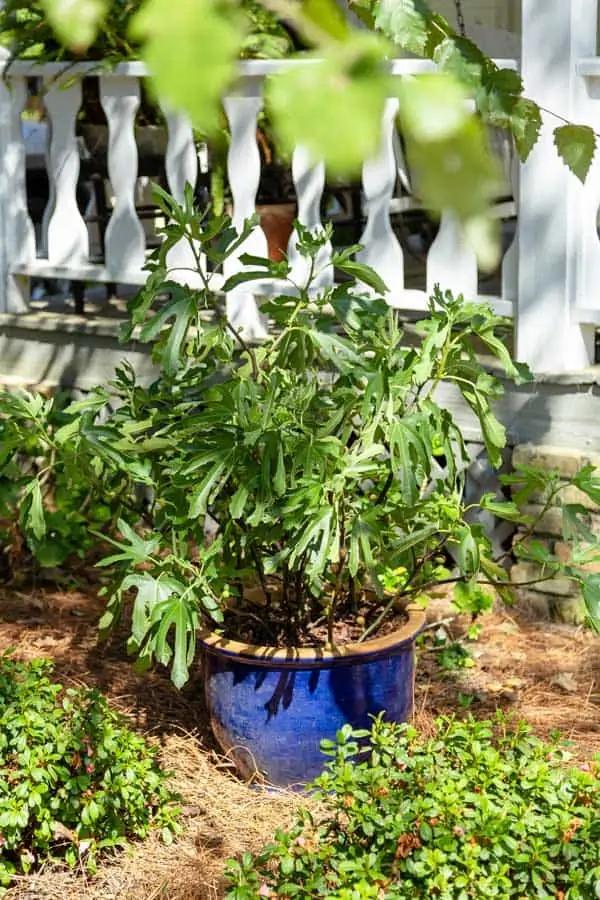This Gardener Reveals How to Grow Them Indoors in Containers: Growing fresh fruit indoors is not only possible, but it’s also a fantastic way to enjoy nature’s bounty year-round, no matter where you live. Imagine plucking a juicy lemon, a crisp apple, or a sweet fig right from your windowsill or patio garden. If you’re lucky enough to have a green thumb (or are willing to learn), you can turn your indoor space into a miniature orchard. With a bit of guidance and some patience, growing fruits like lemons, apples, and figs indoors in containers can become a fun and rewarding hobby.In this article, we’ll cover everything you need to know about growing these three fruits indoors, including the best varieties to choose, tips on watering and sunlight, how to deal with pests, and much more. With practical advice and step-by-step instructions, this guide will help you turn your indoor garden dreams into reality.
This Gardener Reveals How to Grow Them Indoors in Containers
Growing lemons, apples, and figs indoors is a wonderful way to bring nature into your home and enjoy fresh fruit all year round. With the right care, attention to detail, and patience, you’ll be rewarded with homegrown fruit that tastes better than anything you can buy at the store. By following the tips and guidelines in this article, you’ll be well on your way to creating your very own indoor fruit garden.

| Topic | Details |
|---|---|
| Best Indoor Fruit Varieties | Meyer lemons, Columnar apples, Little Miss Figgy figs |
| Required Container Size | 12–15 inches for lemons, 18–24 inches for apples and figs |
| Sunlight Needs | 8–12 hours of direct sunlight daily for lemons, 6–8 hours for apples and figs |
| Watering Tips | Water when the topsoil is dry, don’t overwater to prevent root rot |
| Fertilizing | Use nitrogen-rich fertilizer for lemons, balanced fertilizer for apples and figs |
| Temperature and Humidity | Keep temperatures between 70°F-100°F (21°C-38°C), humidity around 50-60% |
| Growing Time | Lemons may take 1-3 years to fruit, apples 2-4 years, figs 1-2 years |
| Pollination | Apples need cross-pollination for fruit production, lemons and figs are typically self-pollinating |
Growing Lemons Indoors
Choosing the Right Lemon Variety
When it comes to indoor lemons, the Meyer lemon is the go-to choice for most indoor gardeners. It’s a smaller variety of lemon that produces fragrant, sweet fruit—great for everything from lemon meringue pie to lemonade. Unlike regular lemons, Meyer lemons are a bit more tolerant of the indoor environment and have a sweeter, less tart flavor.
Another option is the Eureka lemon, which is more widely available and also grows well indoors with the right care. However, it tends to require more sunlight and a slightly bigger pot than the Meyer.
Key Considerations for Choosing Lemon Varieties:
- Meyer Lemons: Great for beginners. They are smaller, produce sweeter fruit, and are more adaptable to growing indoors.
- Eureka Lemons: A standard lemon variety. While it may take up more space, it still does well in large containers if sunlight and care are adequate.
- Lisbon Lemons: Another variety suitable for indoor growth, but it requires more sunlight and space.

Container and Soil for Lemons
Lemon trees thrive in containers that are 12–15 inches in diameter. They need good drainage to avoid root rot, so be sure the pot has enough drainage holes. The soil should be well-draining, slightly acidic, and rich in organic matter. You can use a citrus-specific soil mix or a general potting mix mixed with perlite for better drainage.
To ensure healthy growth, repot the lemon tree every two to three years into a larger pot. This allows for proper root expansion and prevents the plant from becoming root-bound. Choose a container with drainage holes to help excess water flow out easily, preventing root rot.
Watering and Sunlight
Lemon trees love the sun. They need 8-12 hours of direct sunlight every day to grow well indoors, so choose a bright, sunny windowsill facing south. If you’re in an area with short days, consider supplementing with grow lights. Grow lights that emit the full spectrum of light are ideal for citrus trees. Keep the lights on for at least 12-14 hours per day to replicate sunlight.
Water the plant when the top inch of soil feels dry. Overwatering can lead to root rot, so always check the soil’s moisture before watering. A good rule of thumb is to allow the soil to dry out between waterings, but don’t let it dry out completely.
Fertilizing and Temperature
Lemon trees benefit from regular feeding, especially during the growing season (spring and summer). Use a nitrogen-rich fertilizer to promote healthy growth. During the winter months, you can reduce feeding.
Temperature-wise, lemon trees prefer warm conditions, so make sure they’re kept in a space where temperatures stay between 70°F–100°F (21°C–38°C). They don’t do well in drafty areas or temperatures below 50°F (10°C).
Growing Apples Indoors
Choosing the Right Apple Variety
If you’re growing apples indoors, go for dwarf varieties like Columnar apples or Balcony apples. These types are compact and perfect for containers. They’ll give you that classic apple flavor, but without the need for a big backyard.
Unlike lemons, apples require cross-pollination (two trees of different varieties) to produce fruit. So, if you’re serious about growing apples indoors, you’ll need at least two different types for successful pollination. ‘Golden Delicious’ and ‘Granny Smith’ make a great pair. If space is limited, consider columnar varieties like ‘North Pole’ and ‘Tundra’ for a vertical garden setup.

Container and Soil for Apples
Apple trees need larger containers than lemon trees—at least 18–24 inches in diameter. This will give the tree’s roots enough space to grow. Make sure the pot has excellent drainage and is deep enough to accommodate the root system.
Use a well-draining potting mix that includes a good portion of compost and regular garden soil. Apples are a little less picky about soil pH but still prefer it slightly acidic, around 6.0–6.5 pH.
When planting your apple tree, ensure that the container is large enough to allow for its root expansion. You can also add a layer of mulch on top of the soil to retain moisture and suppress weeds.
Watering and Sunlight
Apple trees need 6-8 hours of direct sunlight each day. A south-facing window is perfect, but if you don’t have enough natural light, you can always supplement with grow lights.
When watering, keep the soil moist but not soggy. Apple trees don’t like wet feet, so it’s important to let the soil dry out slightly between waterings. If you notice the leaves drooping, it’s a sign that the tree may need more water.
Fertilizing and Pollination
During the growing season, fertilize your apple tree with a balanced fertilizer that includes nitrogen, phosphorus, and potassium. As for pollination, remember, apples need another variety nearby to cross-pollinate and fruit. Consider planting a second tree or ask a neighbor with an apple tree to share pollen.
Growing Figs Indoors
Choosing the Right Fig Variety
Dwarf fig trees, like Little Miss Figgy or Petite Negra, are perfect for indoor growing. These varieties won’t grow too large, so they fit well in containers. They produce sweet, small figs that are perfect for snacking or adding to recipes.
Container and Soil for Figs
Like apples, fig trees need larger containers—18–24 inches in diameter. Choose a container that allows for good drainage and use a soil-based potting mix, adding perlite or bark chips for improved drainage.
Figs love warm, sunny spaces and thrive in a slightly acidic soil pH between 6.0–6.5. When planting, add some organic compost or well-rotted manure to provide extra nutrients. Fig trees tend to grow faster and produce more fruit when they have a nutrient-rich environment.
Watering and Sunlight
Figs need full sun for at least 8 hours a day, so place them in a sunny spot. They can tolerate partial shade, but fruit production may be limited.
Water when the soil is dry to the touch but avoid letting it stay soggy. Figs prefer their soil to dry out between waterings, which helps prevent root rot.
Fertilizing and Temperature
Fig trees need regular feeding during the growing season. Use a balanced fertilizer that includes nitrogen for healthy growth. Figs are sensitive to cold, so they should be kept indoors during the winter months to prevent damage from low temperatures.
Overwintering Figs
If you live in a climate where it gets really cold, you’ll need to move your fig tree to a cool space during the winter months. They will enter dormancy when temperatures fall, and this is natural for their growth cycle.

Troubleshooting Common Issues: This Gardener Reveals How to Grow Them Indoors in Containers
Yellowing Leaves
Yellowing leaves in fruit trees often point to issues like overwatering, nutrient deficiencies, or pests. Ensure you’re not overwatering your tree, and check for signs of pests like aphids or scale insects. Consider using a balanced fertilizer to provide essential nutrients.
Fruit Drop
If your indoor fruit trees are dropping fruit prematurely, it could be due to temperature stress, poor pollination, or insufficient light. Ensure your tree is getting enough sunlight and is kept in the right temperature range.
Pests and Diseases
Indoor fruit trees are susceptible to pests like aphids, mealybugs, and spider mites. Regularly inspect the leaves and stems for signs of these pests. If you notice an infestation, use an insecticidal soap or neem oil to treat the problem.
Tips for Indoor Fruit Tree Care
- Pruning: Regular pruning helps maintain the shape of the tree and encourages healthy growth. Prune away dead or damaged branches, especially during the dormant season.
- Repotting: As your fruit trees grow, they may outgrow their containers. Repot your trees every 2-3 years to ensure they have enough space for their roots to expand.
- Humidity: Indoor environments tend to be dry, especially during the winter. You can increase humidity around your trees by placing a humidifier nearby or using a pebble tray with water.
Controversy Confirmed: White Sands Footprints Proven to Be Far Older Than Previously Believed
Say Goodbye to Botox and Brain Fog—This Simple Daily Habit Could Change Everything
The Truth About Vegetable Milk—Why Scientists Say It’s Not as Healthy as You’ve Been Told











